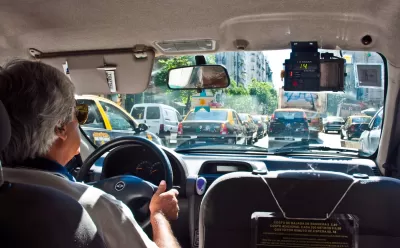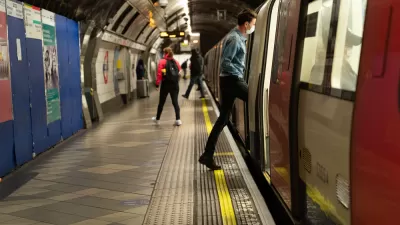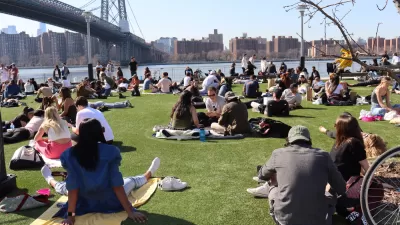Research suggests maximizing airflow during shared car rides vastly reduces the risk of transmission.

As public health officials warned of the dangers of congregating in enclosed spaces during the COVID-19 pandemic, Americans took refuge in one of our favorite private spaces: cars. Although traveling by car may put you at lower risk of transmission than, say, a crowded bus, private vehicles still carry their own risks of infection, reports Emily Anthes. "They are small, tightly sealed spaces that make social distancing impossible and trap the tiny, airborne particles, or aerosols, that can transmit the coronavirus."
A new study maps the patterns of airflow inside a car and suggests that "opening certain windows can create air currents that could help keep both riders and drivers safe from infectious diseases."
"Unsurprisingly, they found that the ventilation rate was lowest when all four windows were closed. In this scenario, roughly 8 to 10 percent of aerosols exhaled by one of the car’s occupants could reach the other person, the simulation suggested. When all the windows were completely open, on the other hand, ventilation rates soared, and the influx of fresh air flushed many of the airborne particles out of the car; just 0.2 to 2 percent of the simulated aerosols traveled between driver and passenger."
When opening all the windows isn't an option, the study's authors recommend opening the windows opposite each occupant to create the most effective air flow.
FULL STORY: How to (Literally) Drive the Coronavirus Away

Trump Administration Could Effectively End Housing Voucher Program
Federal officials are eyeing major cuts to the Section 8 program that helps millions of low-income households pay rent.

Planetizen Federal Action Tracker
A weekly monitor of how Trump’s orders and actions are impacting planners and planning in America.

Ken Jennings Launches Transit Web Series
The Jeopardy champ wants you to ride public transit.

Washington Legislature Passes Rent Increase Cap
A bill that caps rent increases at 7 percent plus inflation is headed to the governor’s desk.

From Planning to Action: How LA County Is Rethinking Climate Resilience
Chief Sustainability Officer Rita Kampalath outlines the County’s shift from planning to implementation in its climate resilience efforts, emphasizing cross-departmental coordination, updated recovery strategies, and the need for flexible funding.

New Mexico Aging Department Commits to Helping Seniors Age ‘In Place’ and ‘Autonomously’ in New Draft Plan
As New Mexico’s population of seniors continues to grow, the state’s aging department is proposing expanded initiatives to help seniors maintain their autonomy while also supporting family caregivers.
Urban Design for Planners 1: Software Tools
This six-course series explores essential urban design concepts using open source software and equips planners with the tools they need to participate fully in the urban design process.
Planning for Universal Design
Learn the tools for implementing Universal Design in planning regulations.
Heyer Gruel & Associates PA
Ada County Highway District
Institute for Housing and Urban Development Studies (IHS)
City of Grandview
Harvard GSD Executive Education
Toledo-Lucas County Plan Commissions
Salt Lake City
NYU Wagner Graduate School of Public Service





























